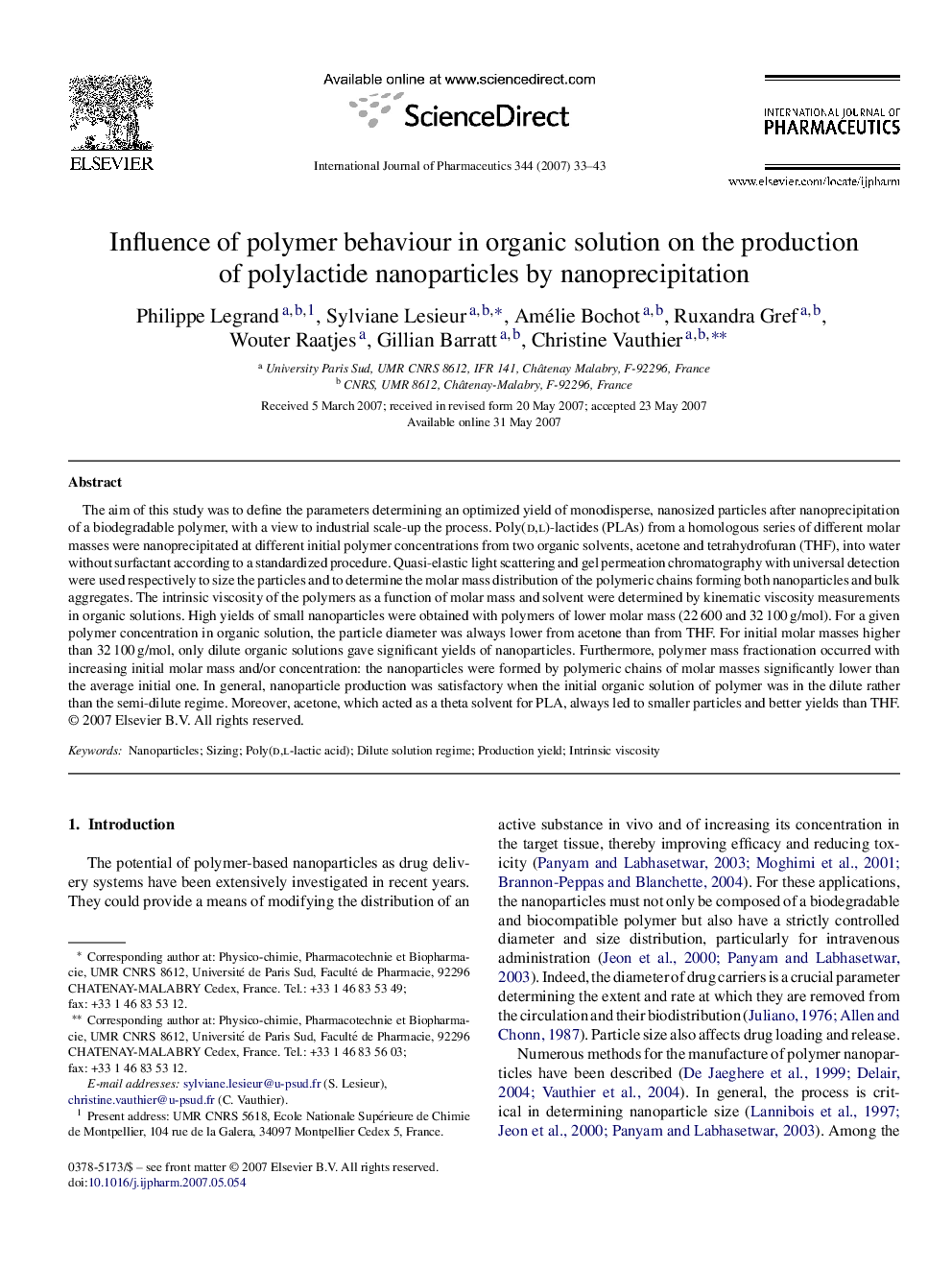| کد مقاله | کد نشریه | سال انتشار | مقاله انگلیسی | نسخه تمام متن |
|---|---|---|---|---|
| 2505846 | 1557502 | 2007 | 11 صفحه PDF | دانلود رایگان |

The aim of this study was to define the parameters determining an optimized yield of monodisperse, nanosized particles after nanoprecipitation of a biodegradable polymer, with a view to industrial scale-up the process. Poly(d,l)-lactides (PLAs) from a homologous series of different molar masses were nanoprecipitated at different initial polymer concentrations from two organic solvents, acetone and tetrahydrofuran (THF), into water without surfactant according to a standardized procedure. Quasi-elastic light scattering and gel permeation chromatography with universal detection were used respectively to size the particles and to determine the molar mass distribution of the polymeric chains forming both nanoparticles and bulk aggregates. The intrinsic viscosity of the polymers as a function of molar mass and solvent were determined by kinematic viscosity measurements in organic solutions. High yields of small nanoparticles were obtained with polymers of lower molar mass (22 600 and 32 100 g/mol). For a given polymer concentration in organic solution, the particle diameter was always lower from acetone than from THF. For initial molar masses higher than 32 100 g/mol, only dilute organic solutions gave significant yields of nanoparticles. Furthermore, polymer mass fractionation occurred with increasing initial molar mass and/or concentration: the nanoparticles were formed by polymeric chains of molar masses significantly lower than the average initial one. In general, nanoparticle production was satisfactory when the initial organic solution of polymer was in the dilute rather than the semi-dilute regime. Moreover, acetone, which acted as a theta solvent for PLA, always led to smaller particles and better yields than THF.
Journal: International Journal of Pharmaceutics - Volume 344, Issues 1–2, 1 November 2007, Pages 33–43